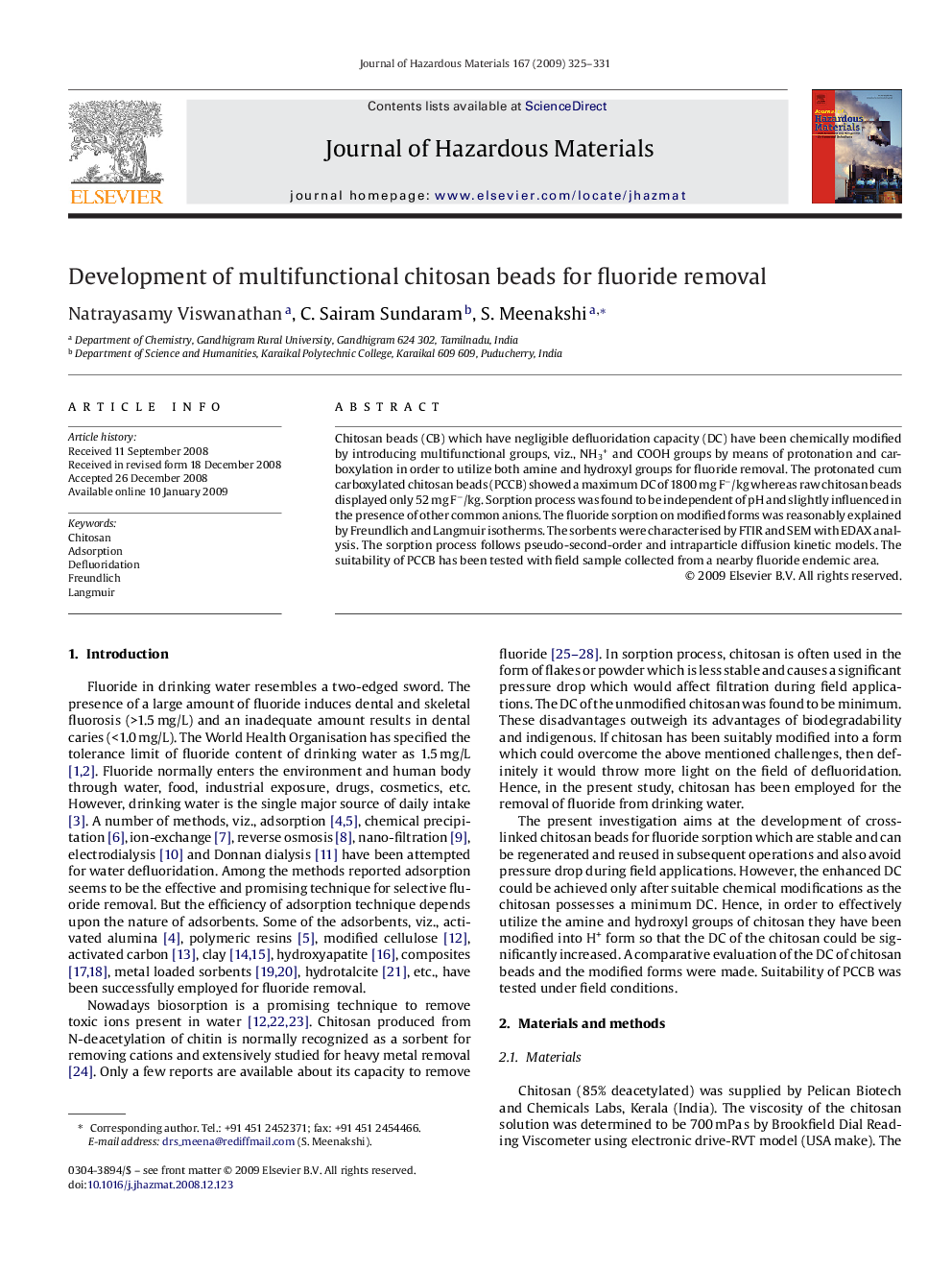| Article ID | Journal | Published Year | Pages | File Type |
|---|---|---|---|---|
| 581786 | Journal of Hazardous Materials | 2009 | 7 Pages |
Abstract
Chitosan beads (CB) which have negligible defluoridation capacity (DC) have been chemically modified by introducing multifunctional groups, viz., NH3+ and COOH groups by means of protonation and carboxylation in order to utilize both amine and hydroxyl groups for fluoride removal. The protonated cum carboxylated chitosan beads (PCCB) showed a maximum DC of 1800 mg Fâ/kg whereas raw chitosan beads displayed only 52 mg Fâ/kg. Sorption process was found to be independent of pH and slightly influenced in the presence of other common anions. The fluoride sorption on modified forms was reasonably explained by Freundlich and Langmuir isotherms. The sorbents were characterised by FTIR and SEM with EDAX analysis. The sorption process follows pseudo-second-order and intraparticle diffusion kinetic models. The suitability of PCCB has been tested with field sample collected from a nearby fluoride endemic area.
Related Topics
Physical Sciences and Engineering
Chemical Engineering
Chemical Health and Safety
Authors
Natrayasamy Viswanathan, C. Sairam Sundaram, S. Meenakshi,
